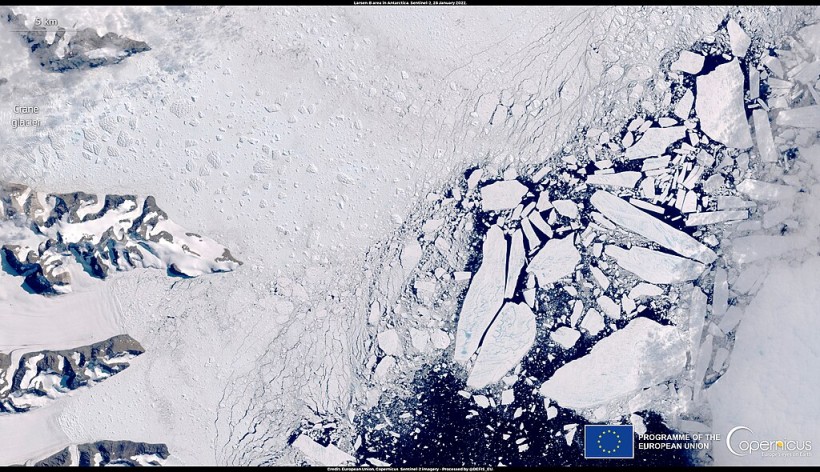On September 26, researchers at NASA and the National Snow and Ice Data Center (NSIDC) announced that the sea ice that covers the ocean around Antarctica hit its lowest maximum extent on September 10. This was observed at a time when the ice cover is expected to grow at a much faster rate during the darkest and coldest months of the year.

Lowest Winter Maximum on Record
As the southern hemisphere transitions into spring, NSIDC reports that Antarctic sea ice has only reached a maximum size of 6.55 million square miles (16.96 million square kilometers) this year. The ice pack usually achieves its largest extent during the colder winter months, so the reading they obtained on September 10 will likely be the maximum this year.
This is the lowest maximum sea ice level in the 1979 to 2023 record by a wide margin. Compared to its previous record, the sea ice was 1.03 million square kilometers smaller at its high point this year. This measurement is roughly the combined size of Texas and California. According to NSIDC scientist Walt Meier, the growth in sea ice appeared low around nearly the entire continent as opposed to any single region.
At the height of the austral summer in February, the Antarctic sea ice had reached a minimum extent of 1.79 million square kilometers, which is also a record-breaking figure. The ice pack grew back, but at a prolonged rate despite the onset of winter.
On the other hand, at the other end of the planet, where summer is almost over, Arctic sea ice reached a low of 4.34 million square kilometers. This represents the sixth-lowest minimum in 45 years of record keeping.
READ ALSO: Dramatic Shift And Climate Changes on Earth, Antarctic Ice Is Record Low In The Satellite Era
Alarming Impact of Climate Change
The Antarctic sea ice has remained stable for several decades, even expanding slightly. Since August, it has been observed that the ice pack trend had a sharp downturn across the succeeding months.
The scientific community is divided over the possible cause of the shift, with some reluctant to connect the trend with global warming. In the past, climate models were not so accurate in predicting changes in the Antarctic ice pack.
According to the analysis of NSIDC, the downward trend is likely associated with the warming in the uppermost ocean layer. Because of this trend, there has been a concern that this may be the start of a long-term decline of Antarctic sea ice since the surface temperature of the oceans continues to rise globally.
Since the sea ice is formed by freezing salt water in the ocean, the melting ice packs have no immediate effects on sea levels. However, white ice has been proven to reflect more radiation from the Sun than darker ocean water, accentuating global warming.
As a result of ice pack loss, Antarctica's coastline is exposed to greater wave action, which can lead to the destabilization of freshwater ice caps and coastal habitats becoming endangered. The melting of land ice would cause an alarming rise in sea levels. Moreover, NSIDC noted that waves impacting the ice sheet could increase cases of accumulation near the coast, offsetting the threat of rising sea levels.
RELATED ARTICLE: Microplastics Found in the Antarctic Sea Ice; Pollution Harming Creatures at the Base of the Food Chain, Scientists Say
Check out more news and information on Antarctic Sea Ice in Science Times.














